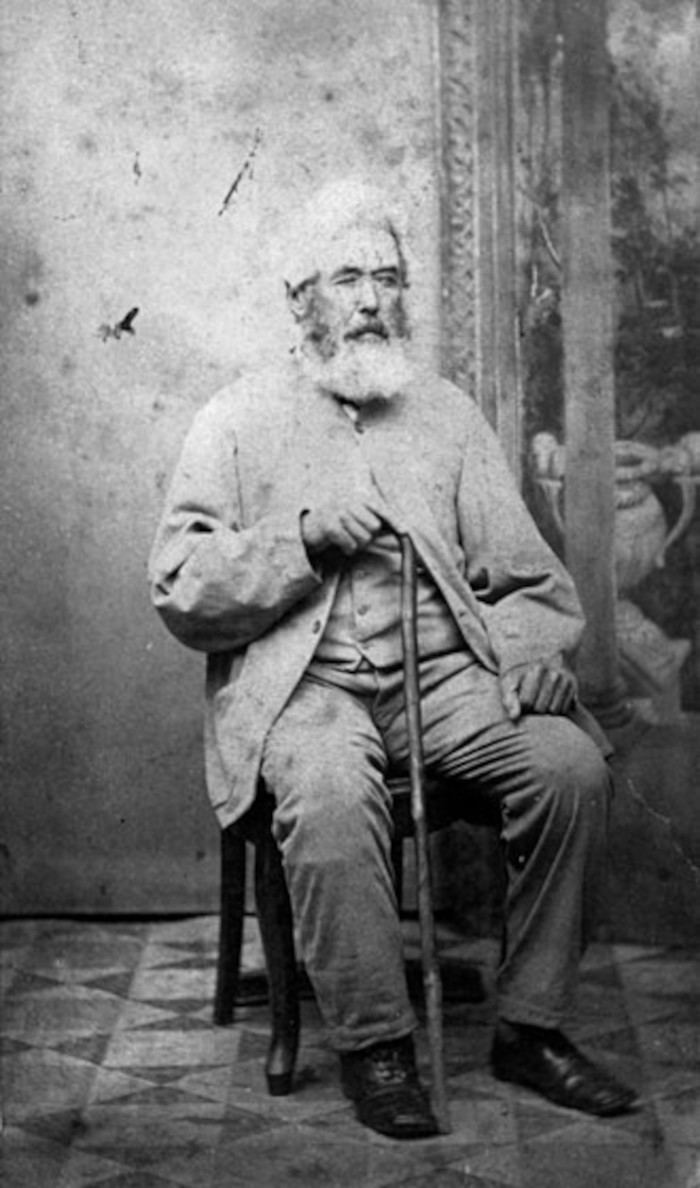Nationality Scottish Name Andrew Petrie | Role Architect | |
 | ||
Born June 1798 ( 1798-06-00 ) Fife, Scotland Occupation Builder, architect, public servant Known for Pioneer construction and engineering works in South East Queensland Died February 20, 1872, Brisbane, Australia Children John Petrie, Thomas Petrie Similar Robin Dods, John Smith Murdoch, Thomas Petrie, John Petrie | ||
Andrew Petrie (1798 - 20 February 1872) was a pioneer, architect and builder in Brisbane, Queensland, Australia.
Contents
Early life
Andrew Petrie was born in Fife, Scotland. He trained as a builder in Edinburgh. He married Mary Cuthbertson in 1821.
Career in New South Wales
John Dunmore Lang brought him, his wife and four sons to Sydney in 1831 with other Scottish mechanics to form the nucleus of a force of free workers. Meeting much enmity from convict and emancipist workers, Petrie was glad to accept a post as clerk in the Ordnance Department. Before establishing his own business he oversaw the construction of a building in Jamison Street for Lang.
Career in Queensland
The quality of his work impressed his superiors so much that, when in 1837 there was an urgent appeal from the Moreton Bay Settlement of New South Wales for a competent builder to repair crumbling structures, Petrie was sent there as Superintendent of Works.
Andrew Petrie and his family, the first free-settlers to move to the area, travelled to Dunwich aboard the James Watt and were then transferred in a pilot boat, manned by convicts that landed at King's Jetty, the only landing place that then existed, now known as North Quay. A year after arriving in the colony Petrie and his family moved into a stone house he built at what is now known as Petrie Bight.
His first important task was to repair the mechanism of the windmill which had never worked. His general duty was the supervision of prisoners engaged in making such necessities as soap and nails, and in building. He also made inspections of government owned sheep and cattle and placed a number of beacons on navigational hazards in the Brisbane River.
Petrie's charge took him to several convict outposts and gave him a taste for travel and exploration. His private journeys soon added to knowledge of the immediate environs of the settlement. When the convict station was removed in 1839 Petrie saw the opportunity at last of a free community, and with his family remained to contribute to its formation. In the new surroundings he was able to pursue two main interests: as builder and architect he was responsible for most of the important structures that arose; and he made many more journeys. He was the first white man to climb Mount Beerwah, one of the Glass House Mountains seen by James Cook, and he was also the first to bring back samples of the Bunya pine. In 1842 with a small party in a boat he discovered the Mary River and brought back to the settlement two 'wild white men', James Davis or 'Duramboi' and David Bracewell or 'Wandi'. He was the first to discover coal at Redbank in around 1837. He explored and named the Maroochy River.
Later life
In 1848 he lost his eyesight because of inefficient surgery after an attack of sandy blight. Despite this condition he still was able to design ferry landings, floating public baths and a bridge over Breakfast Creek. Such was his courage that he still kept control over his business: when plans were explained to him he ordered the necessary quantities of material and was even able to check the performance of his building workers; he used his cane if not satisfied. The Petries had nine sons and a daughter. With advancing years Petrie handed over more and more control to his eldest son, John, who became first mayor of Brisbane. His third son, Thomas, gained much knowledge of the Aboriginal tribes and their customs and languages. Their house was one of the social centres of Brisbane and readily offered accommodation to squatters coming from the outback, especially in the days before Brisbane had a few inns. Petrie was also always being willing to help with food and work to the poor.
